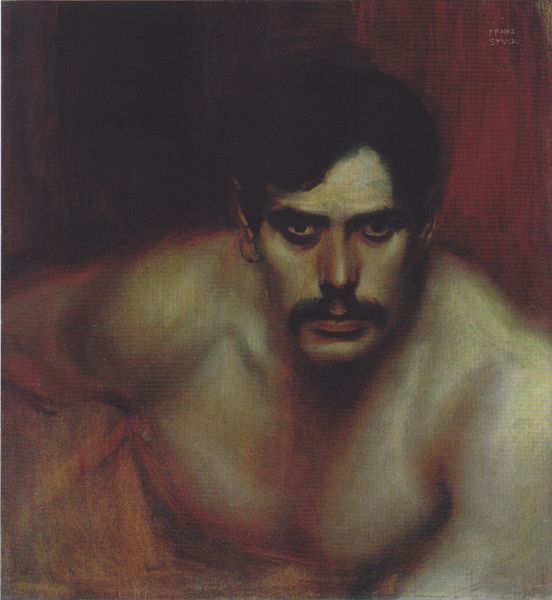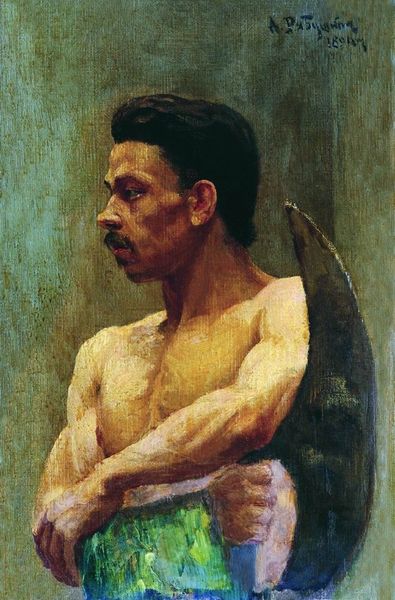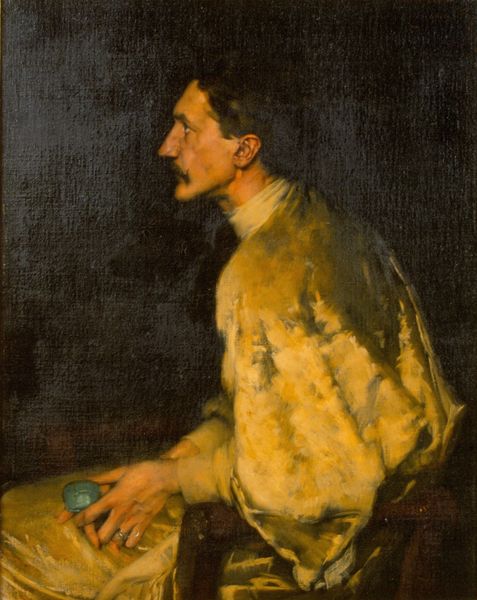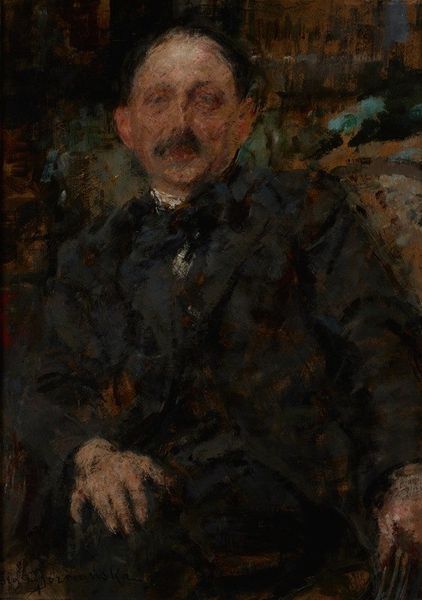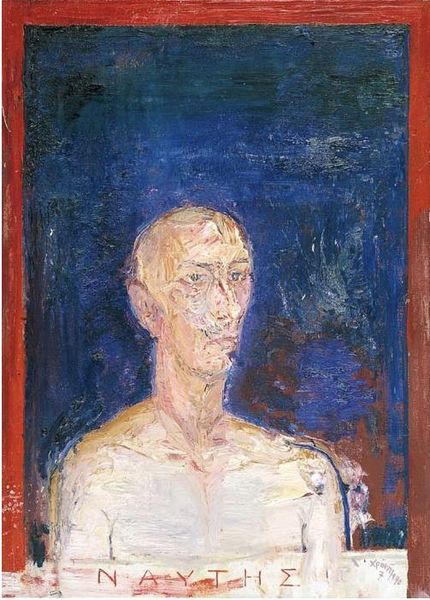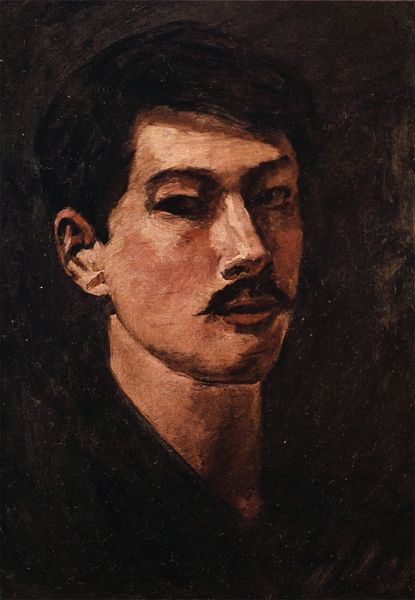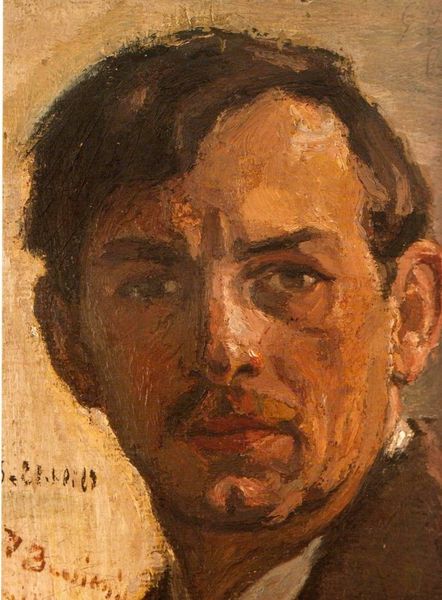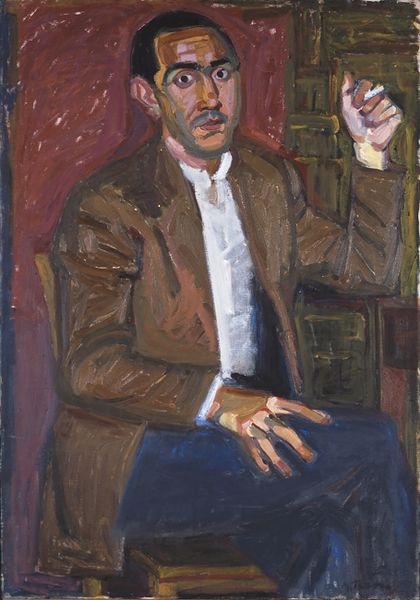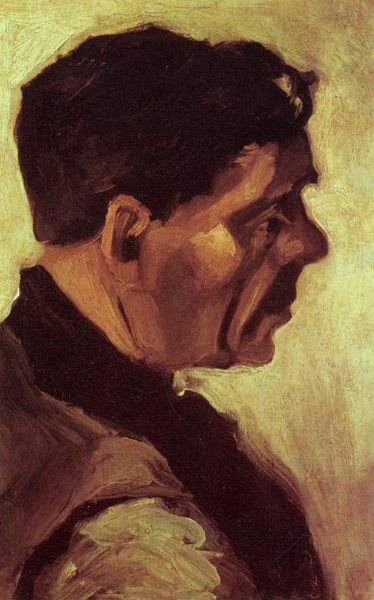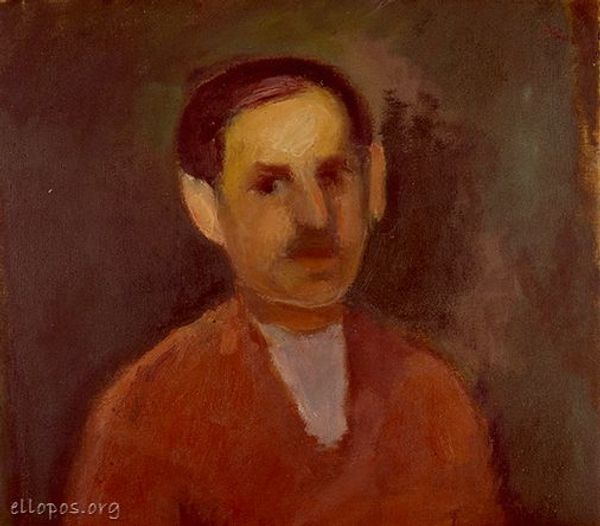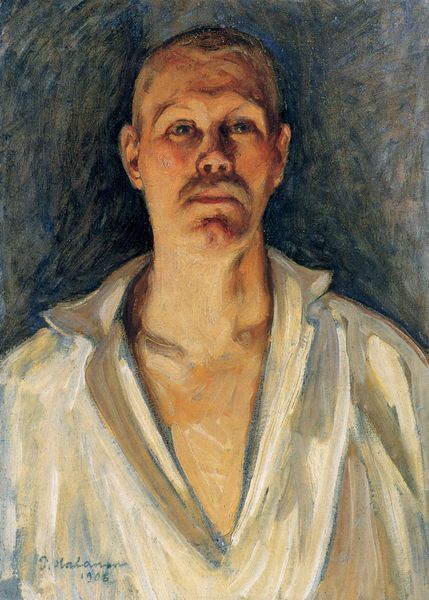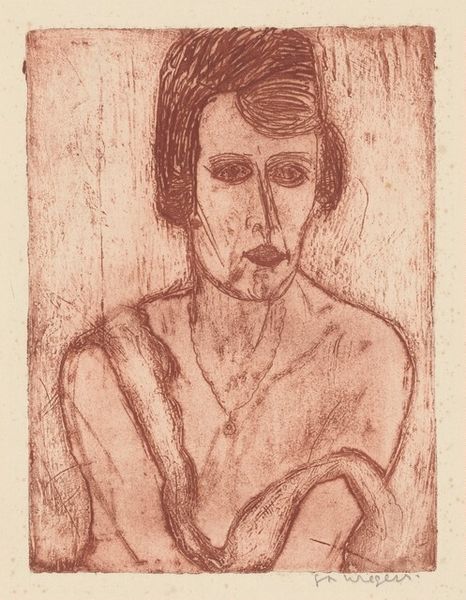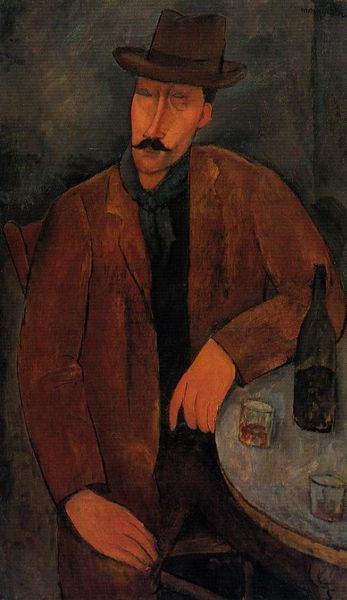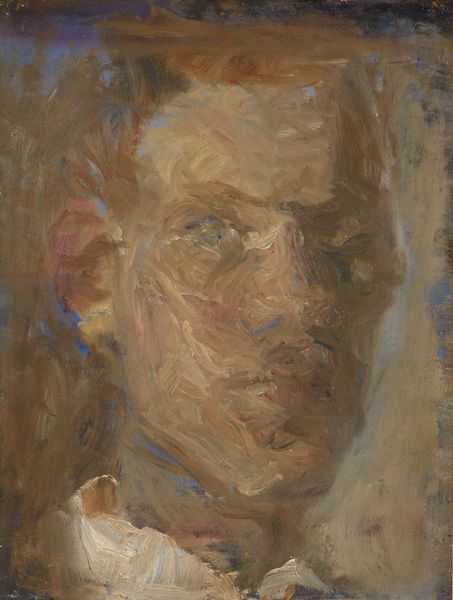
oil-paint
#
portrait
#
oil-paint
#
soviet-nonconformist-art
#
figuration
#
oil painting
#
portrait reference
#
human
#
realism
Copyright: Public domain
Curator: Good morning, let’s consider Kazimir Malevich’s 1933 oil painting, simply titled "Smith." Editor: Haunting. My immediate impression is of a stern, almost spectral figure emerging from darkness. There's something quite unsettling about it. Curator: The composition uses contrasting areas of light and shadow to give the figure dimensionality, a direct reference to classical figuration. But given the Soviet context, "Smith" raises pertinent questions about the artist’s position. Malevich attempts to synthesize avant-garde aesthetics with socialist realism to create a portrait of the ideal Soviet worker. Editor: Idealized? Really? Look at his expression – his raised eyebrow, the set of his mouth. The hand gesture strikes me as defensive, even suspicious. I'm getting anything *but* a sense of optimism. Was he wary of depicting such an idealized representation given Stalinist artistic mandates? Curator: It's a fascinating tension. Notice the muted palette and visible brushstrokes. They evoke a sense of authenticity, while also suggesting a painterly engagement that surpasses mere propaganda. The red garment, possibly a worker’s uniform, adds a subtle visual element that seems… intentional in its restraint. Editor: Restraint? Maybe a veil for subversion. Consider Malevich's fraught relationship with the regime. Having pioneered abstract forms with suprematism, he had to perform a sharp U-turn back to figurative work in order to survive within the dominant cultural system. Curator: This work, then, can be seen as an example of how personal aesthetic expression negotiates politically restrictive context. Editor: Precisely. A powerful example of what happens when the radical aspirations of art collide with the iron fist of ideology. An artist’s career—his life even—hung in the balance, demanding a compromise that may appear docile but reveals an incisive cultural criticism when one knows how to see. Curator: Indeed, our focus on form, texture, and coloration is incomplete without acknowledging these complexities of "Smith." It's about seeing how aesthetics and society influence one another. Editor: Right. A reminder that art isn't created in a vacuum, but reflects larger political and ideological currents and the negotiations the artists have to consider when creating work that represents the individual's view of the whole society.
Comments
No comments
Be the first to comment and join the conversation on the ultimate creative platform.
